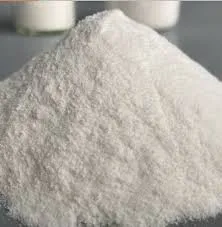
Dec . 18, 2024 12:07 Back to list
hpmc solubility in cold water
HPMC Solubility in Cold Water An Overview
Hydroxypropyl Methylcellulose (HPMC) is a popular cellulose ether widely used in various industries, notably in pharmaceuticals, food, and construction. One of its key attributes is its solubility in water, which plays a crucial role in its application. This article delves into the solubility of HPMC in cold water, exploring its significance, characteristics, and implications for practical use.
What is HPMC?
HPMC is a semi-synthetic polymer derived from cellulose, a natural compound found in plant cell walls. By substituting hydroxyl groups on the cellulose chain with hydroxypropyl and methoxy groups, HPMC exhibits unique properties that differ significantly from its natural precursor. These modifications improve its solubility and thermal stability, making it suitable for a wide range of applications.
Solubility Properties
HPMC is known for its excellent solubility in cold water, which is a defining feature of this compound. Unlike some other cellulose derivatives that require heat to dissolve, HPMC readily disperses in water at ambient temperatures. This quality is particularly beneficial in applications where thermal stability is crucial, such as in pharmaceuticals and food processing.
The solubility of HPMC in cold water is influenced by several factors, including viscosity, molecular weight, and the degree of substitution of the hydroxypropyl and methoxy groups. Generally, HPMCs with a higher degree of substitution tend to have better solubility. Moreover, lower molecular weight HPMC grades dissolve more readily than higher molecular weight counterparts. This versatility allows formulators to choose specific grades to achieve desired solubility characteristics in their applications.
hpmc solubility in cold water

Applications in Various Industries
1. Pharmaceuticals In the pharmaceutical industry, HPMC is frequently used as a binder, coating agent, and controlled-release agent in drug formulations. Its solubility profile allows for the effective delivery of active pharmaceutical ingredients (APIs) while ensuring stability and bioavailability. Additionally, HPMC's ability to form gels in aqueous solutions is valuable for creating sustained-release formulations.
2. Food Industry HPMC is employed as a thickener, emulsifier, and stabilizer in food products. Its solubility in cold water facilitates easy incorporation into culinary applications, such as sauces, dressings, and bakery products. HPMC also contributes to improving texture and mouthfeel, enhancing overall consumer acceptance.
3. Construction In the construction sector, HPMC is utilized in cement and plaster formulations due to its water retention properties and ability to enhance workability. Its solubility enables ease of mixing and application, ensuring a smooth finish and optimal bonding of construction materials.
Conclusion
The solubility of Hydroxypropyl Methylcellulose in cold water is a defining characteristic that underpins its wide-ranging applications across several industries. Its unique properties provide formulators with the flexibility to create products that require precise solubility profiles and performance characteristics. As demand for sustainable and efficient materials continues to rise, HPMC remains a vital compound in the ongoing quest for innovative solutions in pharmaceuticals, food production, and construction. Understanding and leveraging the solubility of HPMC will allow industries to maximize its potential, ultimately leading to better products and enhanced consumer satisfaction.
-
Versatile Hpmc Uses in Different Industries
NewsJun.19,2025
-
Redispersible Powder's Role in Enhancing Durability of Construction Products
NewsJun.19,2025
-
Hydroxyethyl Cellulose Applications Driving Green Industrial Processes
NewsJun.19,2025
-
Exploring Different Redispersible Polymer Powder
NewsJun.19,2025
-
Choosing the Right Mortar Bonding Agent
NewsJun.19,2025
-
Applications and Significance of China Hpmc in Modern Industries
NewsJun.19,2025







